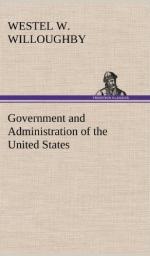5. The Legal-Tender decisions, given in several cases soon after the civil war, are important. During the progress of the war the Government, in order to raise funds to meet its extraordinary expenses, had been forced to issue slips of paper which represented no deposits of coin in the Treasury, but only promises to pay certain sums by the Government. These were declared legal tender, that is, made by law as good as gold and silver, and the people were forced to receive them in payment of debts and for commodities. It was questioned whether the Government had by the Constitution power to do this. The legal-tender decisions declared that it had. Judicial System and Jurisdiction of the United States Courts.
_#District Courts.#_—The United States is divided into judicial districts. Many single States form a judicial district, while others are divided into two and others into three districts. The number of districts has varied. At present there are about sixty. To each of these districts is given a court and a district judge. These form the lowest grade of Federal courts.
_#Circuit Courts.#_—These judicial districts are grouped into nine circuits. For example, the Fourth circuit includes the districts of Maryland, Virginia, West Virginia, North Carolina, and South Carolina. For each circuit is appointed one circuit judge. One of the justices of the Supreme Court is also allotted to each of the circuits, who, after the expiration of the Supreme Court term, visits his circuit, and tries the more important cases which may arise in that circuit. The Circuit Court may be held by the circuit judge, the Supreme Court justice, or the district judge of that district in which the court is sitting, or by any two of them, or all of them, sitting together. The Circuit Courts form the next series of the Federal courts higher than the District Courts.
_#Jurisdiction.#_—The relation between the Supreme, Circuit and District courts is easy to explain. Their jurisdiction is upon federal questions; that is, over those cases mentioned in the Constitution over which judicial power has been granted to the United States, viz., questions arising under the Constitution, federal laws, or treaties, between citizens of different States, between citizens and foreigners, between States themselves, etc., and all crimes punishable under the United States laws.
The Circuit Court is higher than the District Court, and to it cases involving $500 and over may be appealed from the District courts. The Supreme Court is the court of last resort, and to it all appeals from the Circuit Courts come, with the limitation that $5,000 be involved. The cases decided by the Supreme Court are then of two classes: (1) those over which it has original jurisdiction, (see Constitution); i.e., those cases which originate or begin in that court; and (2) those cases over which it has appellate jurisdiction, i.e., those cases which




